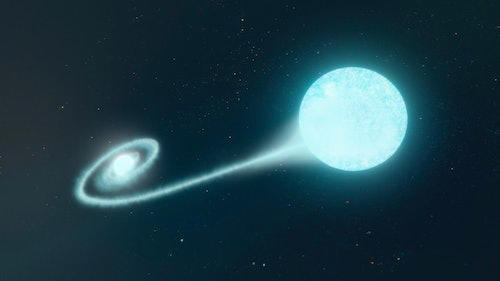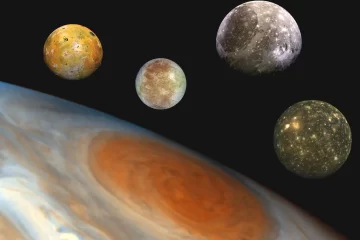When stars like our Sun die, they tend to go out with a whimper and not a bang — unless they happen to be part of a binary (two) star system that could give rise to a supernova explosion.
Astronomers have now discovered the radio trace of a similar explosion in a galaxy more than 400 million light-years away for the first time. The discovery, which was recently reported in Nature, provides intriguing hints as to what the companion star might have looked like.
A star explosion death
Up to eight times as massive as our Sun stars blast off their outer layers when they begin to run out of nuclear fuel in their cores. This process creates the bright gas clouds that are misnomerly referred to as planetary nebulae and leaves behind a white dwarf, which is a dense, compact hot core.
Our own Sun will undergo this transition in 5 billion years or so, then slowly cool and fade away. However, if a white dwarf somehow puts on weight, a self-destruct mechanism kicks in when it gets heavier than about 1.4 times the mass of our Sun. The subsequent thermonuclear detonation destroys the star in a distinctive kind of explosion called a Type Ia supernova.
But from where would such an explosion draw its additional mass?
We once hypothesised that it might be a larger companion star in a nearby orbit shedding gas. But celebrities frequently eat sloppy and spill petrol all over the place. Any gas that was spilled would be shocked by a supernova explosion and light at radio wavelengths. However, despite decades of looking, no early Type Ia supernova has ever been found using radio telescopes.
Instead, researchers started to believe that Type Ia supernovae must be pairs of white dwarfs spiralling inward and merging together in an orderly manner, leaving no gas to shock and no radio signal.
a unique class of supernova
On March 23, 2020, a telescope in Hawaii made the discovery of supernova 2020eyj. It behaved basically the same as any other Type Ia supernova for the first seven weeks or so.
But it didn’t lose brightness for the following five months. At about the same time, it started to exhibit characteristics that pointed to gas with abnormally high helium content. We started to believe that Supernova 2020eyj belonged to a peculiar subtype of Type Ia supernovae where the blast wave, travelling at a speed of more than 10,000 kilometres per second, sweeps past gas that could only have been ripped off the outer layers of a surviving companion star.
We decided to see if there was enough gas being shocked to produce a radio signal in an effort to verify our suspicion. Instead of using telescopes like the Australia Telescope Compact Array in Narrabri to observe the supernova because it is too far north, we used a network of radio telescopes dispersed across the United Kingdom to do so about 20 months after the explosion.
To our great astonishment, a second sighting made about five months later verified our initial observation as the first-ever clear identification of a “infant” Type Ia supernova at radio frequencies. Could this be the “smoking gun” to prove that not every Type Ia supernova is brought on by the union of two white dwarfs?
Patience is rewarded.
The fact that Type Ia supernovae appear to all achieve roughly the same peak brightness is among their most surprising characteristics. This is in line with the idea that they all experienced a similar critical mass prior to bursting.
That the universe’s expansion since the Big Bang is accelerating due to the effects of what we now refer to as dark energy was the Nobel Prize-winning conclusion reached by astronomer Brian Schmidt and colleagues in the late 1990s was made possible by this very characteristic.
Type Ia supernovae are therefore significant cosmic events, and astronomers have been concerned by the fact that we still don’t fully understand how, when, or what causes these stellar explosions to be so regular.
Why should merging white dwarf pairs release roughly the same amount of energy when their combined masses can reach almost three times that of the Sun?
This consistency has a simple explanation thanks to our theory (and radio confirmation) that Supernova 2020eyj occurred when just enough helium gas was pulled off the companion star and onto the white dwarf’s surface to drive it slightly over the mass threshold.
The reason we haven’t heard this radio signal from any other Type Ia supernova is now under dispute. Maybe we gave up too easily and sought to find them too soon after the blast. Or perhaps not all companion stars are abundant in helium and prolific in releasing their outermost layers of gas.
But as our research has demonstrated, tenacity and patience can occasionally pay off in unexpected ways, enabling us to hear the fading utterances of a faraway star.
source from: msn.com



